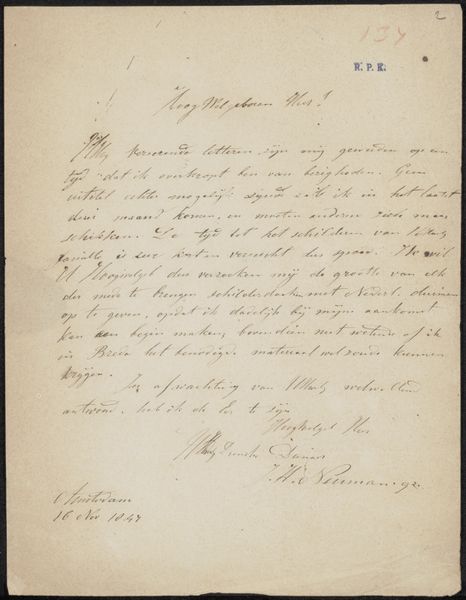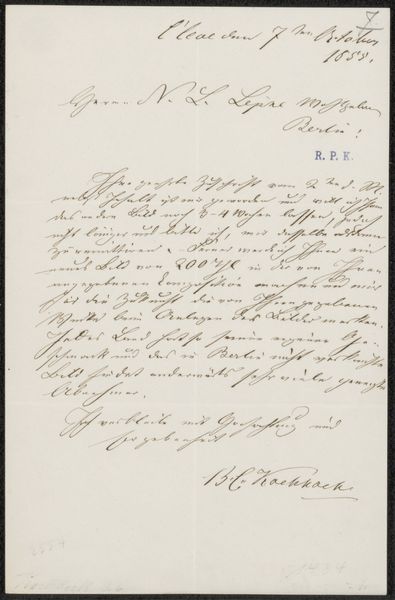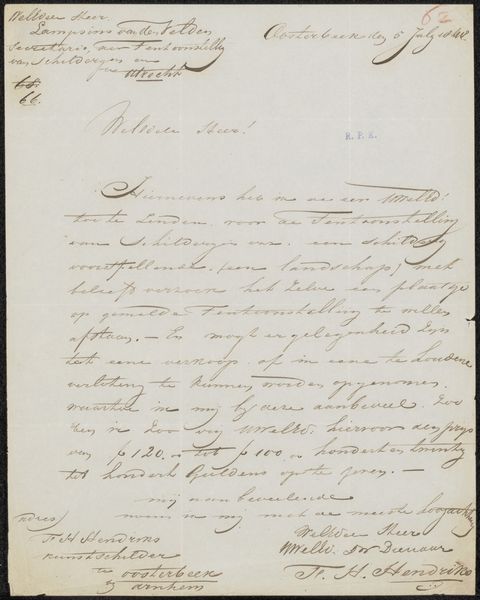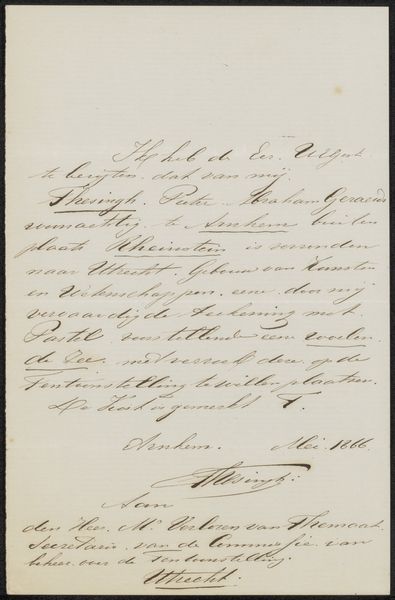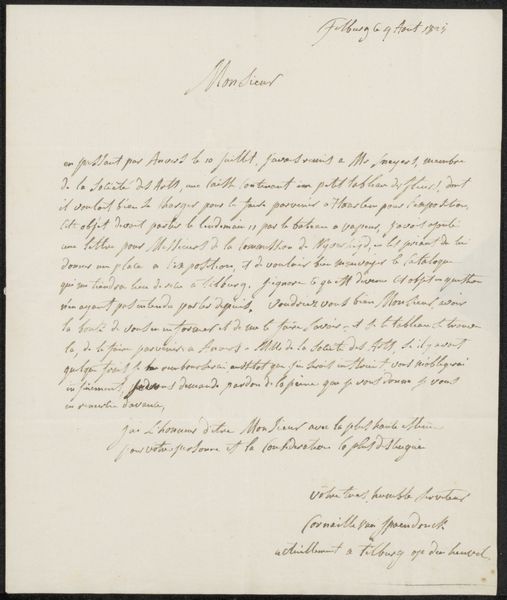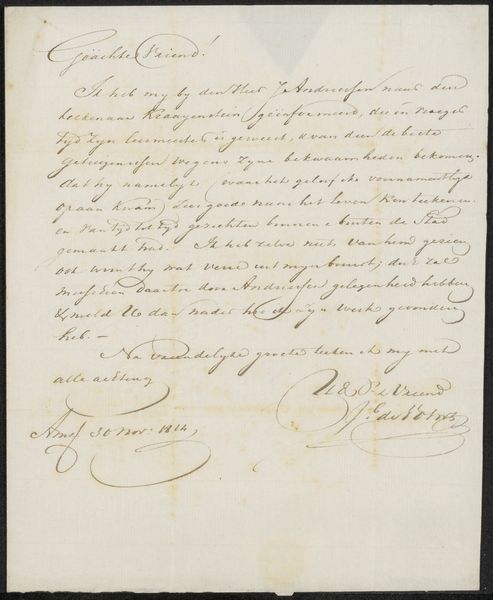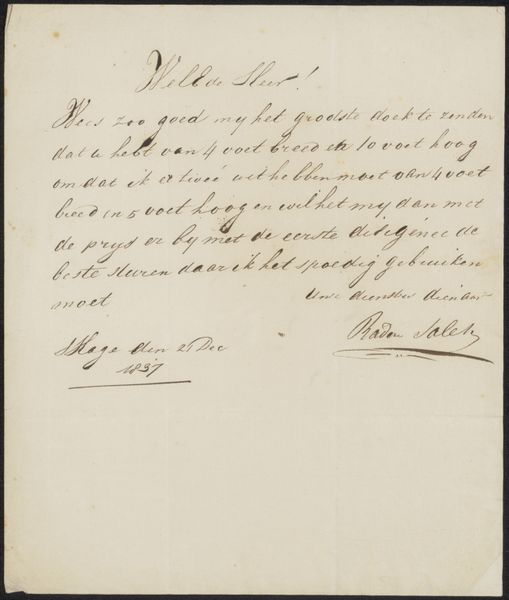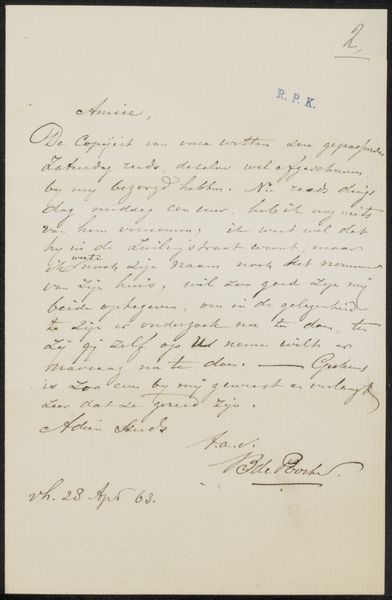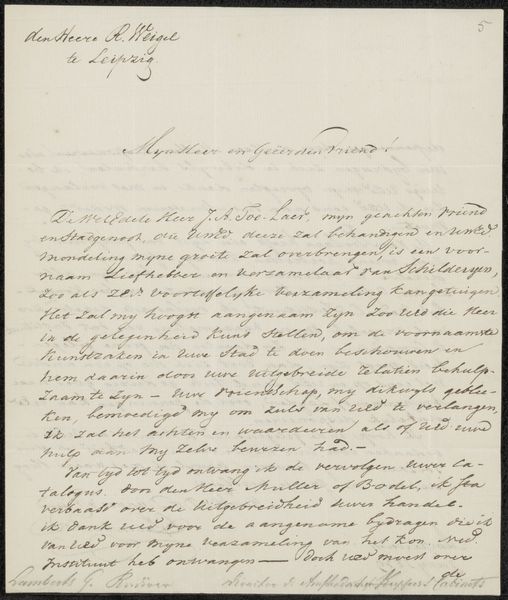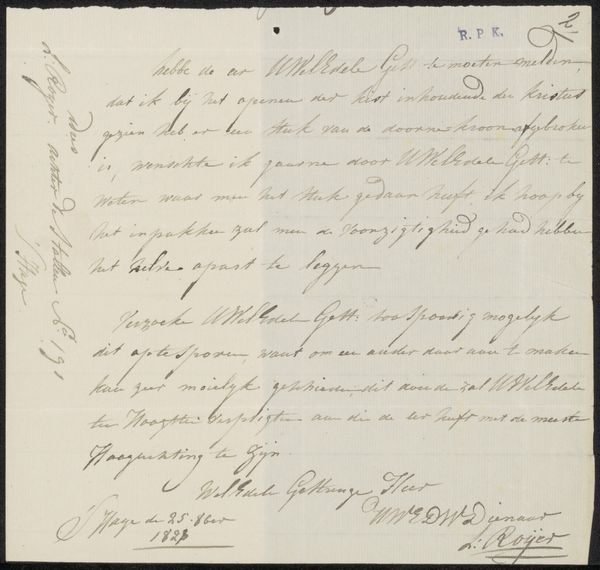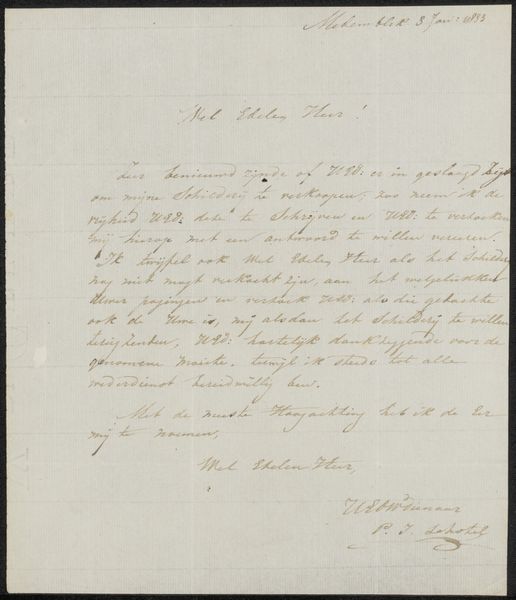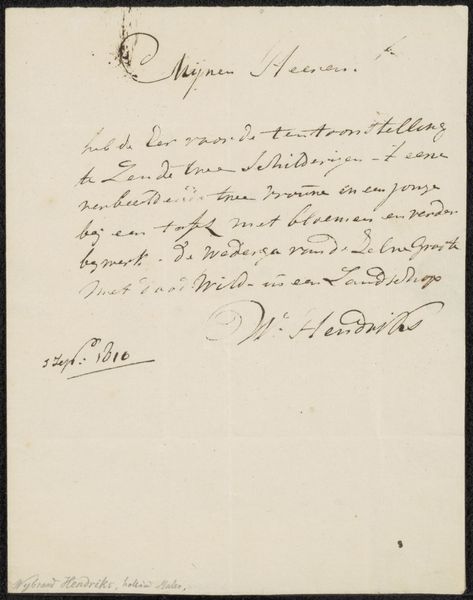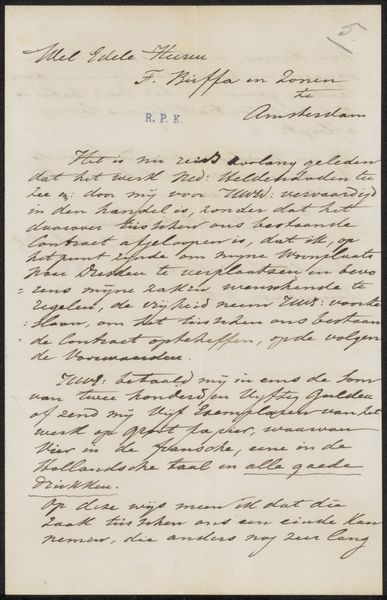
drawing, paper, ink, pen
#
portrait
#
drawing
#
hand drawn type
#
paper
#
personal sketchbook
#
ink
#
pen-ink sketch
#
visual diary
#
pen work
#
sketchbook drawing
#
pen
#
sketchbook art
#
realism
Copyright: Rijks Museum: Open Domain
Editor: So, here we have Arnoldus Bloemers' letter "Brief aan jonkheer H.P.F. 't Hooft," likely from 1843 or 1844. It's ink on paper, a detailed drawing that resembles a personal sketch. I'm struck by how formal it seems, even for a casual letter. How do you see the context of this work affecting our interpretation? Curator: The formality you observe highlights the socio-political structures of the 19th century. This wasn't just a note; it was a carefully constructed piece of communication reflecting the rigid social hierarchies and the role of patronage in the art world. Look at the elegant penmanship, the carefully chosen honorifics – these were all performative elements within a system where reputation and connections were crucial for an artist’s success. Who was 't Hooft in relation to Bloemers and how does it reflect on patronage? Editor: That’s interesting! So, the letter itself becomes part of the artwork because it reflects the artist’s position within that power structure. The content probably is of less interest than the power dynamics enacted. Curator: Precisely. It's less about the literal message, though sales and pricing are involved, and more about the social performance the letter embodies. Consider the museum’s role today in perpetuating or challenging similar hierarchies. Does exhibiting this letter somehow reinforce Bloemers's dependence or offer a critical lens? Editor: So by displaying the work, are museums influencing how future artists approach networking, or even thinking about sales today? It almost seems like art as both an expression and a marketplace are intrinsically linked. Curator: Exactly! We shape reception by how we contextualize pieces like this. By understanding its place within the 19th-century social fabric, we gain insights into the enduring connections between artistic creation, economic realities, and social status that persist into our own era. Editor: That gives me a lot to consider about the modern presentation of artwork, too! It really makes me rethink the relationship between art and society.
Comments
No comments
Be the first to comment and join the conversation on the ultimate creative platform.
